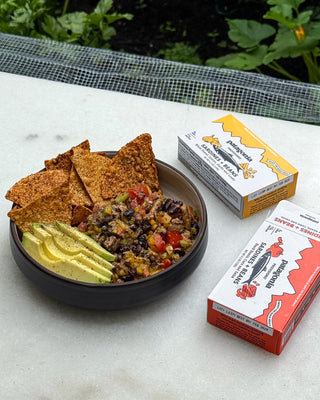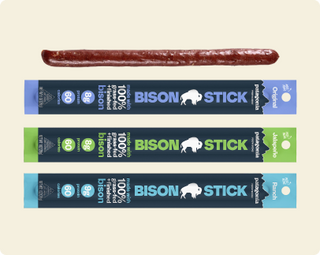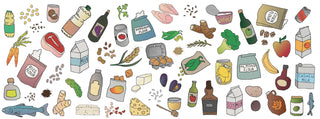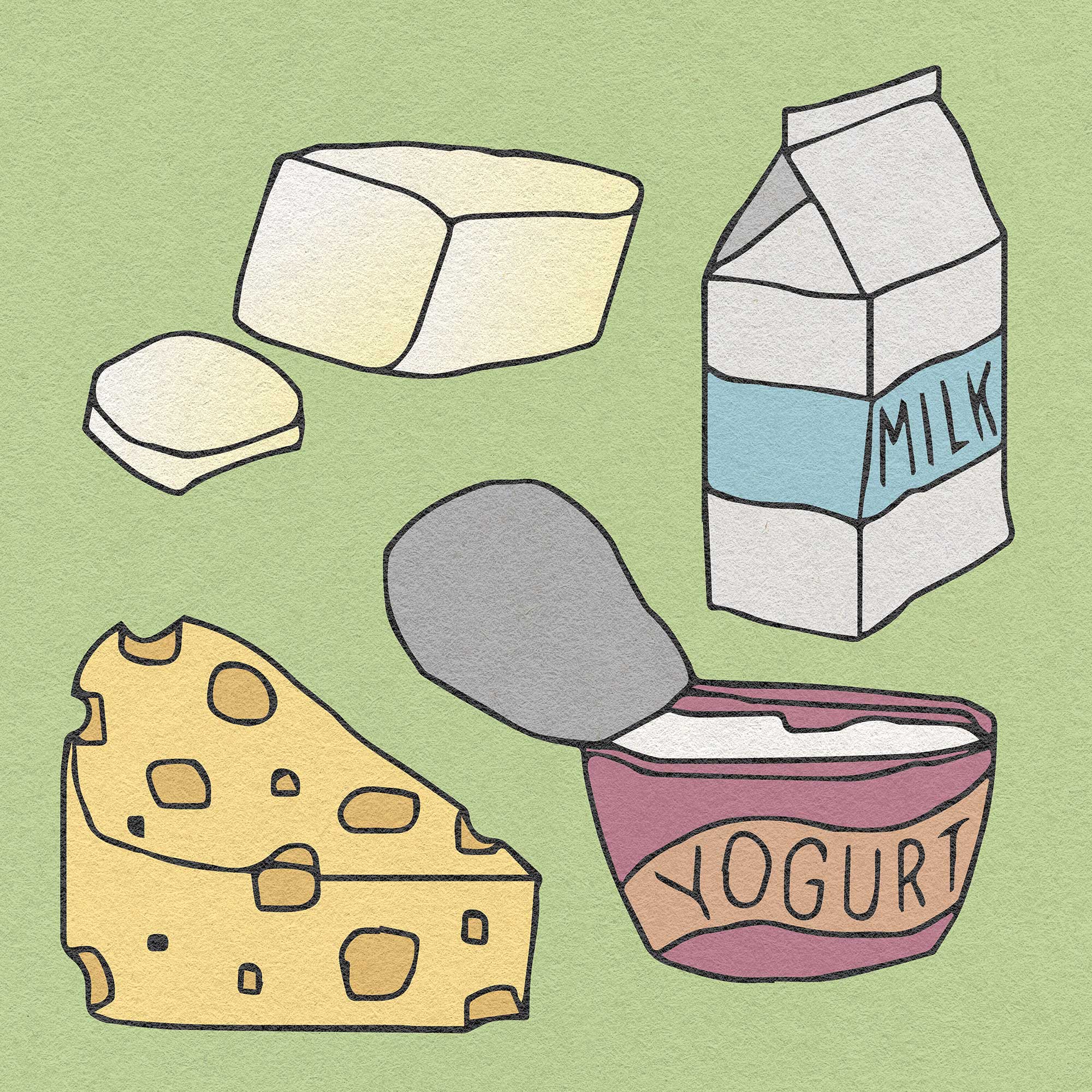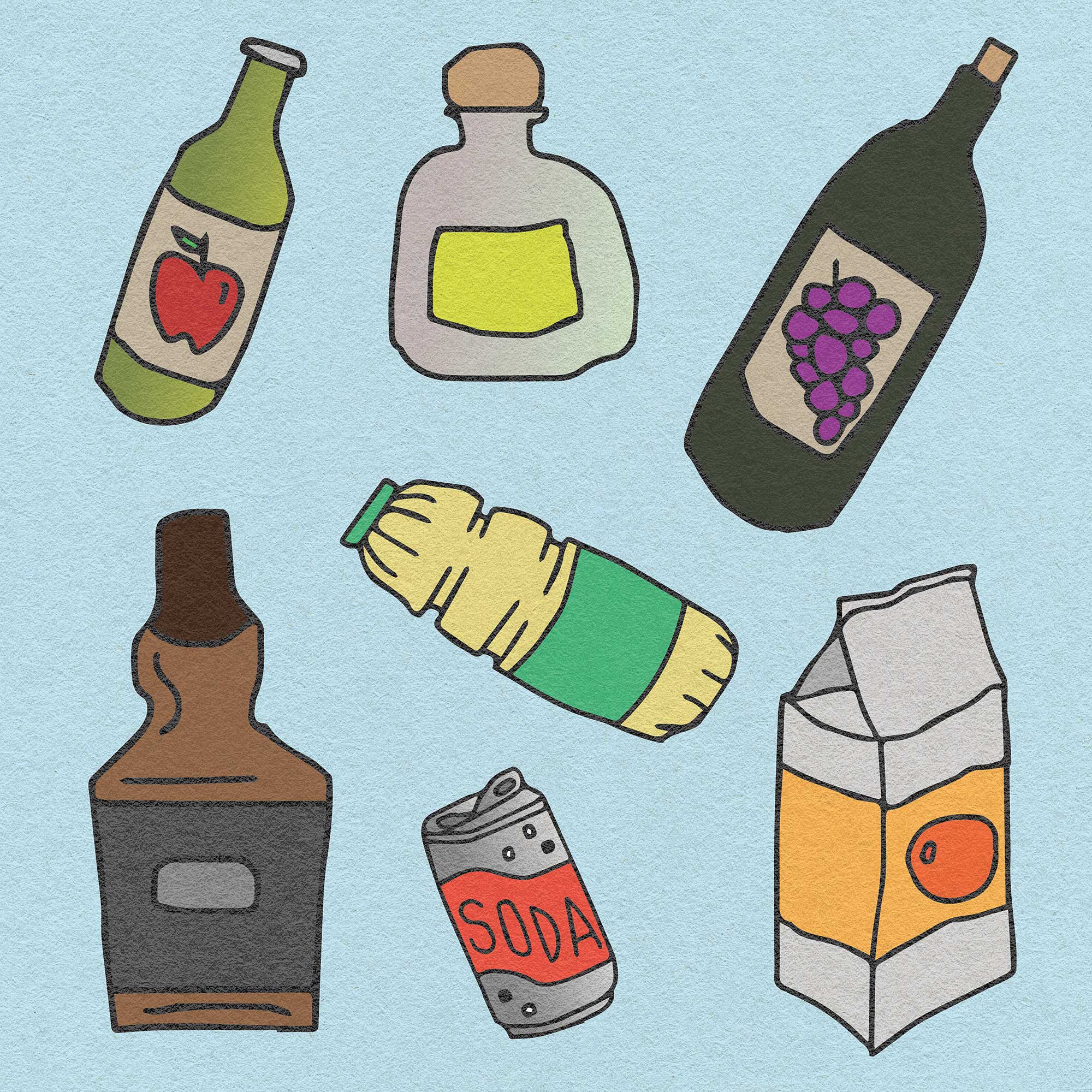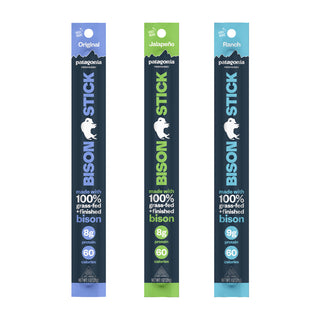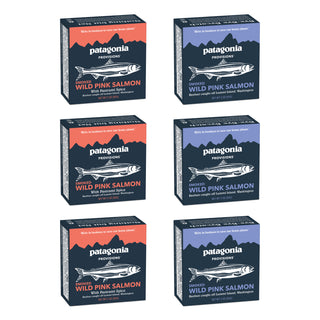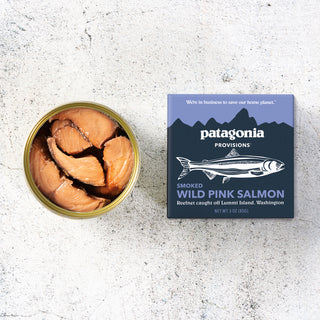Whether you’re committed to gluten-free eating or just experimenting. Use it when you’re shopping and in restaurants to guide your diet and explore new flavors.
For more on eating gluten-free, see our Guide to Gluten-Free Eating.
Grains, seeds and starches
- Amaranth
- Arrowroot
- Buckwheat groats (a.k.a. kasha)
- Chia seeds
- Corn & corn flour
- Flaxseeds
- Gluten-free oats
- Millet
- Potatoes, cassava and yucca
- Quinoa
- Rice (all kinds) & rice flour
- Sorghum & sorghum flour
- Tapioca
- Teff
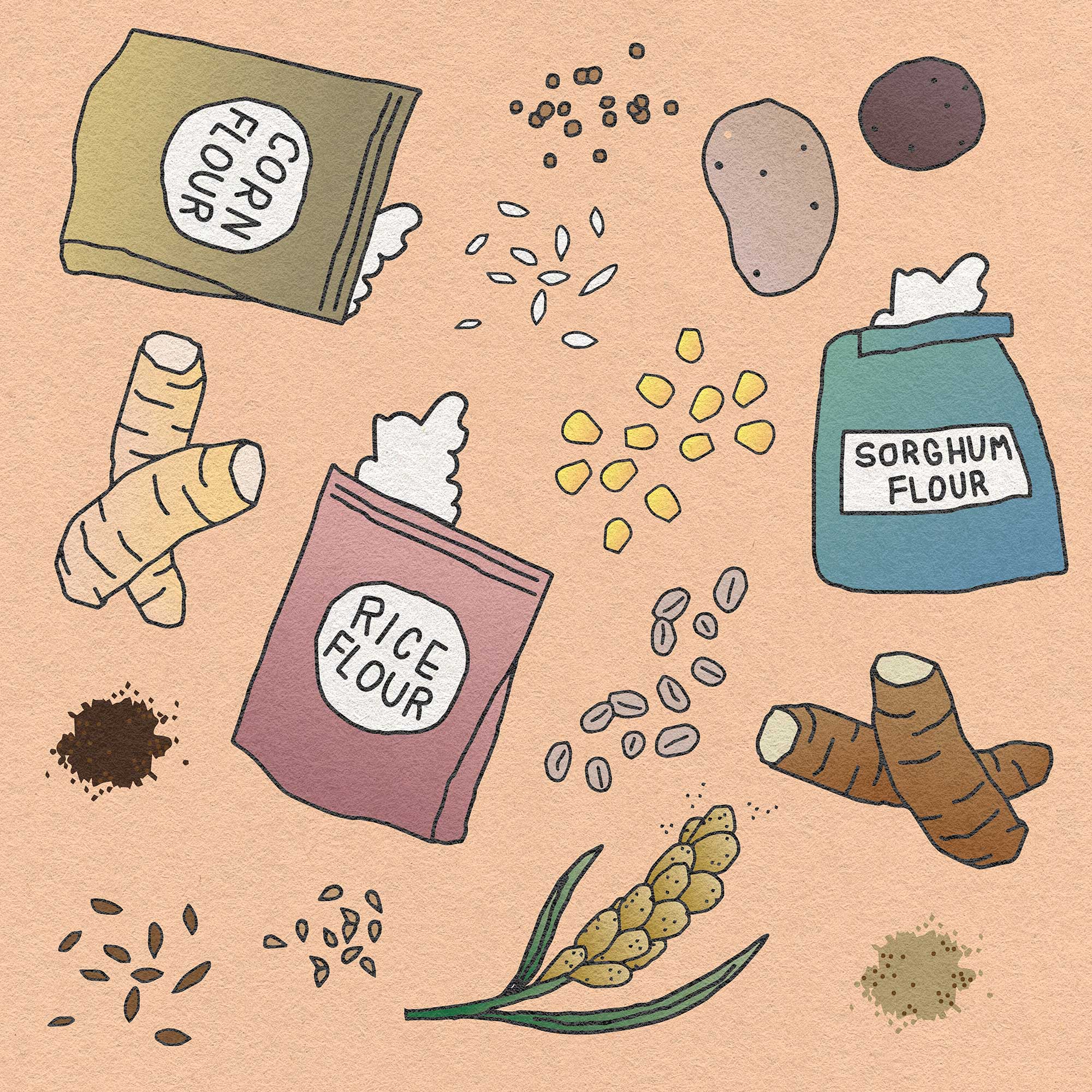 Illustration by Anna Baldwin
Illustration by Anna Baldwin
Dairy
- Beans & legumes (including soybeans and soy milk)
- Meat & poultry
- Eggs
- All seafood
- Nuts and nut flours; most nut milks (if labeled gluten-free)
- Tofu (if labeled gluten-free; avoid flavored tofu, which can contain gluten)
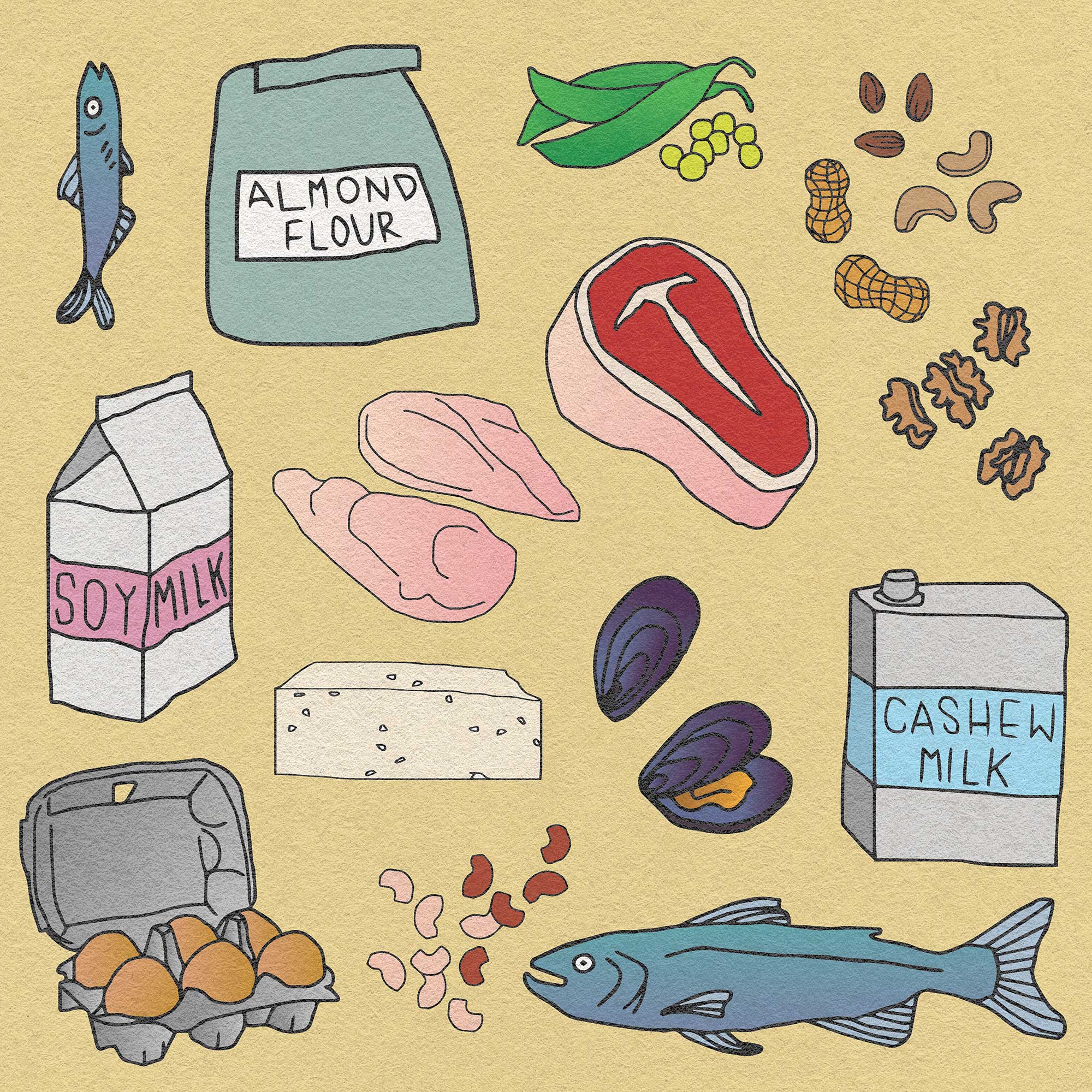 Illustration by Anna Baldwin
Illustration by Anna Baldwin
Produce
- All fresh fruits and vegetables (frozen, canned and dried are usually fine too; check labels)
- Fresh and dried herbs
- Canned and jarred olives (if they’re stuffed, check the label)
- Most pickles
- Capers
- Preserved lemons
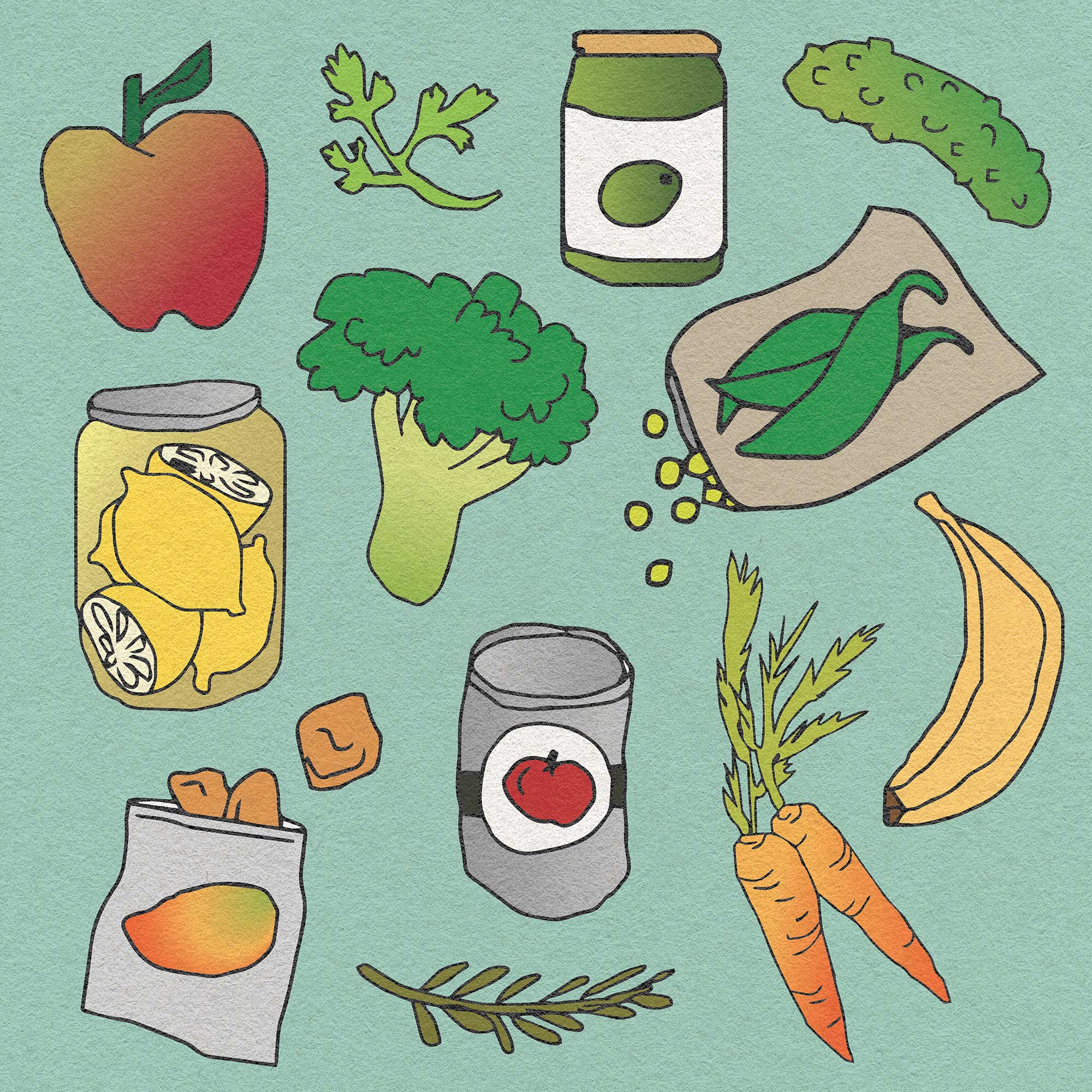 Illustration by Anna Baldwin
Illustration by Anna Baldwin
Condiments
- Vinegars (except malt vinegar, rye vinegar, flavored vinegars and rice vinegars, which all can contain gluten; check the label)
- Oils (olive, canola, corn, coconut, vegetable, soybean, grapeseed, sesame, safflower and peanut)
- Maple syrup
- Honey
 Illustration by Anna Baldwin
Illustration by Anna Baldwin
Beverages
- Distilled liquors
- Hard ciders
- Hard liquor
- Juice
- Soda
- Sports drinks
- Wine (although some dessert wines and most wine coolers contain gluten)
Illustration by Anna Baldwin
Sources: Celiac Disease Foundation and Celiac.com
For information about gluten-free versions of gluten-rich foods like breads, cereals, cookies and cakes, visit the Foundation’s website.

